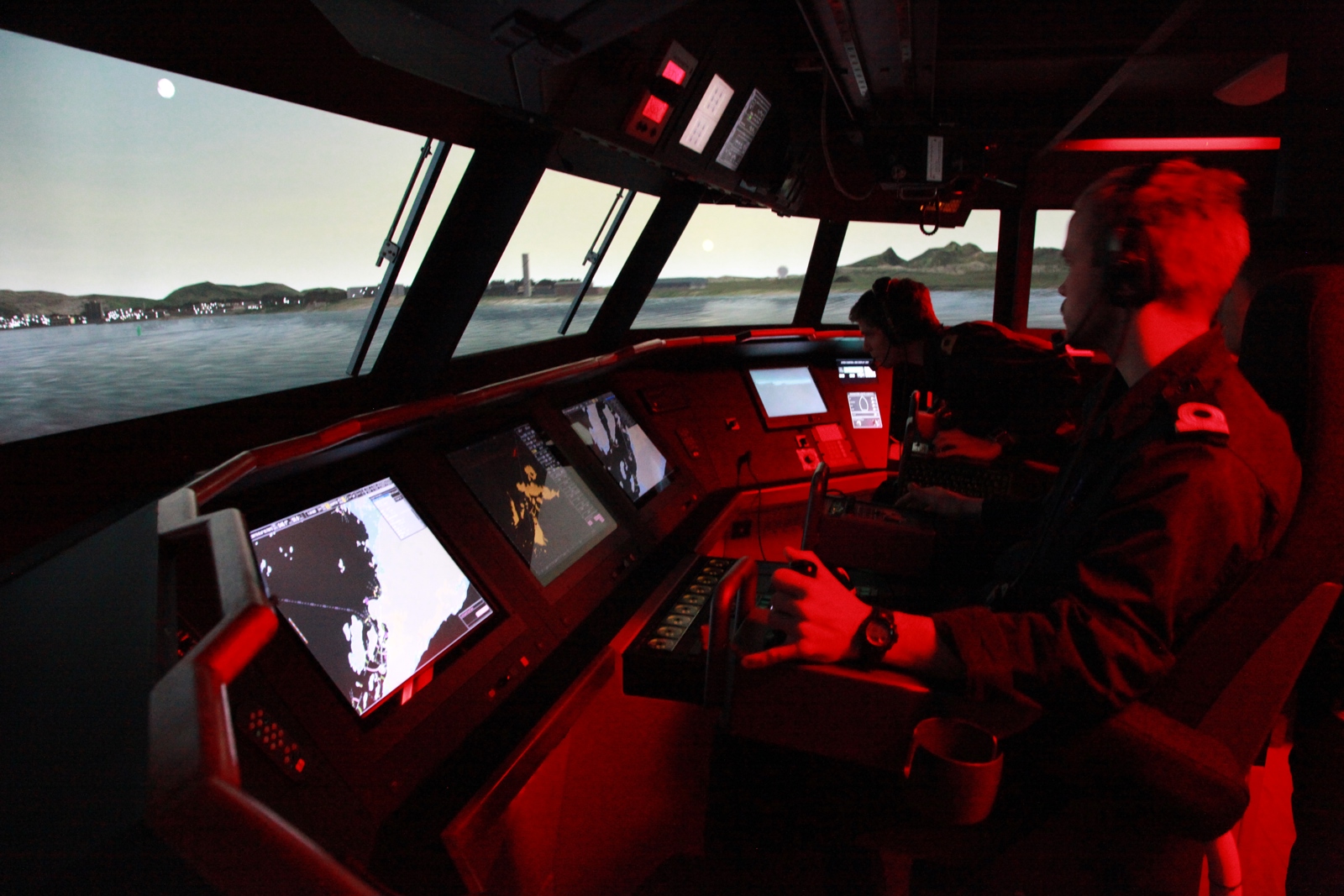
270 Degrees North
In deep concentration, the cadets manoeuvre towards Bodø harbour. The Royal Norwegian Navy's new Skjold simulator plays a hugely important role in the training of officers onboard Norway's new coastal corvettes.
-
Text:OVE RONNY HARALDSEN
-
Ove Ronny HaraldsenGroup Communication Manager
The view of the Børvasstindan peak on our right-hand side is breathtaking. Travelling at speeds of 60 knots along the Bodø peninsula coast, the view changes quickly and you soon catch sight of a new landmark. The SAS hotel towers above the Bodø skyline, leaving us in no doubt of our position. Mountains, buildings, beacons and sea depths: All presented in amazing virtual reality. In this simulator, Norwegian naval officers have the opportunity to practice their navigation, decision-making and routines. Lieutenant Commander Anders Milde confirms that the simulator provides a virtually very realistic experience of being onboard a coastal corvette.
“The original plan was to carry out two thirds of the training onboard the vessels and one third in a simulator. We’ve changed things around now and carry out most of our navigational training in the simulator. With the simulator, we can train in virtual situations which would not be possible when on the vessel itself. We can train in how to react when a vessel suddenly appears in front of our bow, when we lose our GPS signal, suffer a gyro error or other situations in which we need to practice,” explains Anders Milde, who is in charge of the coastal corvette project for the Royal Norwegian Navy.
360 DEGREE IMAGES
In recent years, small vessels hired in by Kongsberg Maritime have been sailing both northbound and southbound along the coast of Norway, fitted with special cameras linked to hard discs onboard, to photograph in detail vast parts of the Norwegian coast. The images are then converted to provide a graphical presentation of Norway’s coastal areas. This provides a virtual yet true-tolife landscape in which the coastal corvette crews can really get into the thick of things, with absolutely no risk of harm to their lives, health or any materials.
“The photographer made use of a roundshot camera from Seitz which allows photography of 360 degree panorama images complete with GPS position and gyro stabilisation. The photography work has mainly been carried out from the sea, and many an hour has been spent sailing between the coastal areas of interest,” explains Project Manager for the installation, Joachim Hansen from Kongsberg Maritime.
TRUE-TO-LIFE
The simulator bridge is practically identical to the bridge onboard a genuine Skjold class coastal corvette. All the instruments, handles and communication equipment are authentic. A deep bass speaker under the floor simulates the sound of the vessel’s four gas turbine engines. Even the chairs on the bridge vibrate, as if from the engines. Advanced software allows the Royal Navy to accurately reproduce the complex movements of the vessel when on the water.
The simulator is surrounded 270 degrees externally by a curved screen. Press just a few keys and the calm fjord waters off the coast of Bodø are transformed to stormy seas. Gale force winds from the south-west drive showers of sleet directly into the front windscreen – which naturally is equipped with windscreen wipers. The waves suddenly cause the floor to rock. It becomes difficult to ignore the sneaking feeling of seasickness.
“Your vision tricks you into thinking you are moving, even though your feet are firmly planted on the ground. Around 80% of our sensory impressions, on which we base our actions, come from our eyes. It is therefore important to be as authentic as possible when it comes to visual reality,” explains Commander Petter Lunde of the simulator department.
SAVINGS
The new simulator also provides a number of financial benefits. It allows officers to practice navigation and tactical manoeuvres without causing pollution, costing a lot of money, occupying a whole crew or causing wear and tear to the vessels. “In reality, we would be using a lot of fuel and taking up the time of a whole crew, just to help train our officers on the bridge. With the simulator, we can finely tune how we train our officers on the bridge and we can practice much more frequently. This represents vast improvements in the efficiency of training for both crew and officers,” concludes Lieutenant Commander Anders Milde.